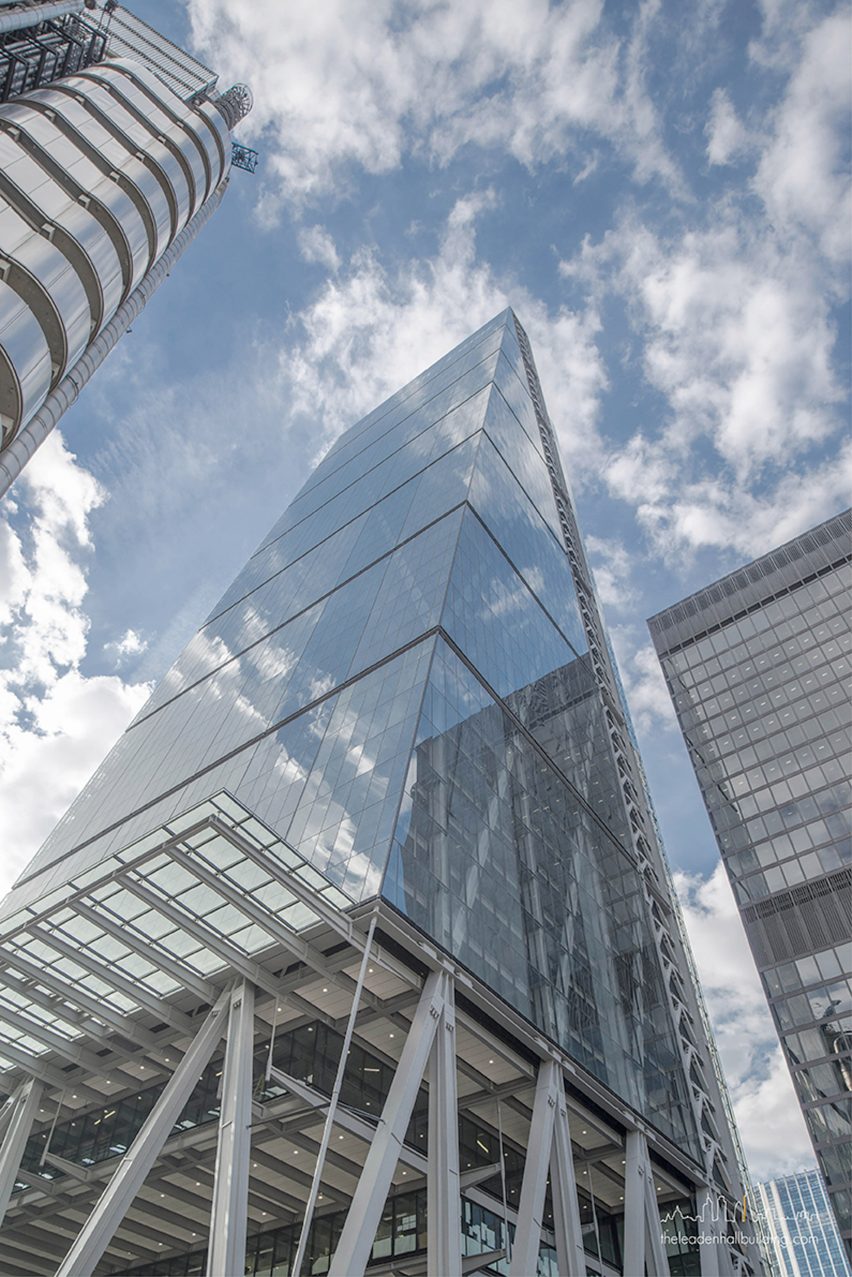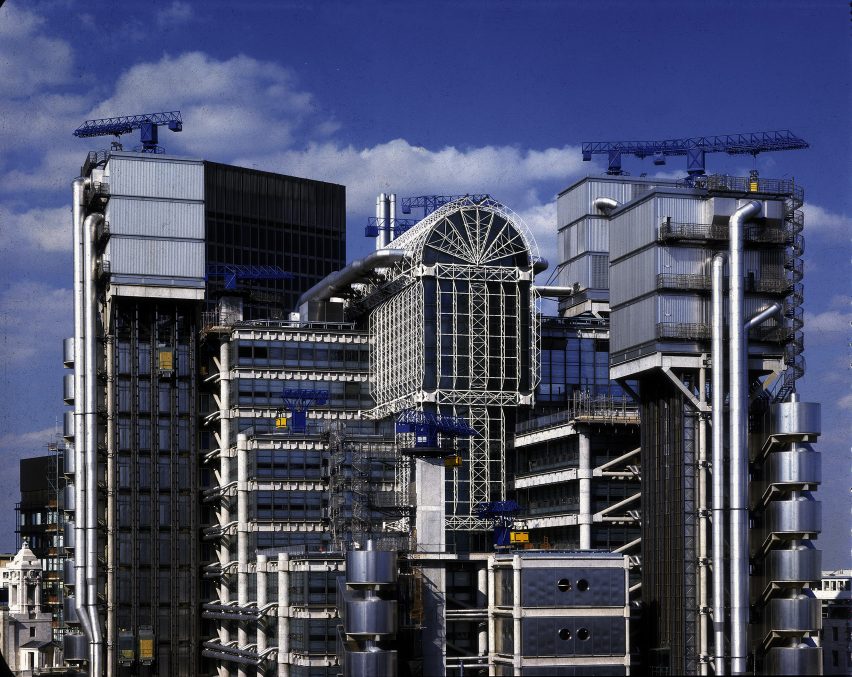"London is unique in being partly controlled by views," says Richard Rogers
In the fourth exclusive interview that we filmed with Richard Rogers in 2013, the late architect explains how the distinctive shape of the Leadenhall building was created to preserve views of St Paul's Cathedral.
The interview forms part of a series filmed by Dezeen in 2013, which marked a retrospective of the architect's work at the Royal Academy of Arts in London.
Rogers, who passed away on 18 December aged 88, was one of the world's most acclaimed architects and a key pioneer of the high-tech architecture style that emerged in the 1970s.
Among his most notable work is the Leadenhall building, an east London office skyscraper completed in 2013 that is known as "the Cheesegrater" due to its slanting, wedge-shaped structure.
It stands opposite the high-tech Lloyd's building, which was completed by the architect in 1986.
During this interview, filmed at the Rogers Stirk Harbour + Partners studio in Hammersmith, Rogers explained that the shape of the Leadenhall building was the result of having to preserve preserve protected views of the nearby St Paul's Cathedral.
"London is unique in being partly controlled by views," said Rogers. "So you have these big cuts, and you have to leave certain views open to St Paul's, and we were on one of those views."
"The only way to build a tall building was to slope out of that," he continued. "Now you could step out of it, you could cut it shorter, and so on. So we made use of this, and we cut it back – the Cheesegrater as it's now called – at an angle."
Read on for a transcript of the interview below:
"Leadenhall office building, which is the tallest building in the city of London, is again a different animal. First of all, it's an office building.
"And that says, as I mentioned, it tends to be very boring. One of the arts of architecture is not only to humanise it, as I mentioned, but also how to use the constraints.
"And in a way, turn them upside down and see whether that can help you to design the building. The main constraints on Leadenhall were the views to St Paul's.
"London is unique in being partly controlled by views. So you have these big cuts, and you have to leave certain views open to St Paul's, and we were on one of those views.

"The only way to build a tall building was to slope out of that. Now you could step out of it, you could cut it shorter, and so on. So we made use of this, and we cut it back – the Cheesegrater as it's now called – at an angle.
"And that gives it that very prominent section, and profile for all over London. We also had a client again, which we got on with very well with, British Land, who are willing to have a seven storey atrium, it's not enclosed. So probably you could call it a seven-storey public space below the building.
"The building itself expresses its system of construction because again, we celebrate construction because it's one of the things in which we get scale. And scale is a critical part.
"I mean, architecture is about scale, it is about rhythm, it's about geometry. It's obviously about beauty. These are all these elements and scale, which is really the size of the hand on whatever you do, is how you recognise size as well as light and shadow.
"It's got 50 storeys. So how you break it down into the scale is critical.
"What's interesting for me in Leadenhall is that whereas we thought Lloyd's was the absolute ultimate and the art of technology, when I look at it now it's handmade practically.
"Now we had pieces taken by truck off-site and so on. Leadenhall was all built off-site, I mean it arrived completely. The structure is less visible because in a sense, it's less important, we're more used to it, the shape is very important, the public space is very important. You can see the wonderful banks of elevators on the backside.
"So the elements which we have got to know well we are using. They're losing a lot of, obviously, flexibility. So we're using that but in a way, which more or less 40 years later than then probably which is very much machine-made.

"So what the next one will probably be even more, well it will be even more. And it's very exciting to see that dialogue between these two. And actually, I think it's really exciting to see the dialogue between Lloyd's of London, Leadenhall and of course, the dome of St Paul's in the background of a totally different period.
"To me, that's what architecture is about. It's not about fitting it in, as the last building. It's setting up these dialogues. You know, the enjoyment of St Paul's was that it was seen against a very low and rather poor mediaeval background. That was for flourish.
"That's the same as any form of architecture. So it's a dialogue. It's a beauty that comes through contrast."